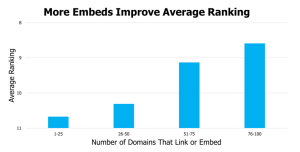 The performance review—it’s a good way to help people understand where they’re at, but at the same time, many employers do them so badly that everyone ends up hating them. Here are seven common blunders that we all hate.
The performance review—it’s a good way to help people understand where they’re at, but at the same time, many employers do them so badly that everyone ends up hating them. Here are seven common blunders that we all hate.
1) Forced Grading Curves
“I’m sorry, Betty, you work hard enough to be in the top 25% of employees, but we’ve already hit our quota, and I can only mark you as being in the 50th percentile.”
Forced grading curves require raters to lie about how well employees perform solely for the sake of conforming to an arbitrary curve. It encourages mediocrity, and that is absurd when you’re also trying to improve engagement and performance.
2) Hypocrisy Among Raters
In an ideal world, all performance ratings would be completely fair and unbiased. However, it’s far more likely that the process will involve at least some hypocrisy as some managers support their favorite employees while alienating anyone they don’t like. It’s far more likely that you’ll start to see some warning signs from disgruntled employees—for in the end, hypocrisy in ratings never turns out well.
3) General Bias
It’s also common for managers to rate employees on subjective criteria, rather than objective. For example, modern technology makes it easy to figure out how much of an employee’s work got done on-time—but “how hard the employee worked” is a little harder to quantify. It often requires some HR Solutions to get past this bias and measure employees strictly on performance-based standards.
4) Psychology Sessions
Many managers use personality traits to describe their employees—they “lack initiative” or “have a negative attitude” when doing their job, never mind the fact that the same manager might be discouraging initiative by being controlling and causing that negative attitude. Instead of labeling an employee, good small business HR strategies will focus on providing specific examples of how an employee is expected to behave in a given situation.
5) Lecturing
People, on the whole, do not listen to lectures. Managers who go on and on about the same mistakes during a performance review will simply be disregarded, and that’s their own fault. A lecture, in effect, is a session in which an employee is bombarded with the message “I don’t like you, I don’t want you here, and I consider you to be nothing more than a problem for me to manage.”
Employees do not need to be lectured—but managers still do this on a regular basis.
6) Bringing Up Old Examples
Examples are a great way of illustrating a point during a performance review, right? Well… not if they’re too old or simply not relevant to the review period. If an employee has been counseled on a situation or problem in the past, they don’t like to be reminded and worse, if they’ve already solved the problem or changed the behavior, bringing it up again is outright offensive. Good examples will be as recent as possible.
7) Highlighting Flaws
Finally, there are managers who think that performance review sessions are a good way to talk about an employee’s flaws and list everything they’re doing wrong. That’s no way to make employees feel like they’re appreciated, though, and it’ll take some serious work to earn back the lost goodwill. Any discussion of flaws should be balanced by talking about that employee’s strengths.
Now that you know what problems to avoid, let’s move on to the next part of the discussion. Here are some tips for doing review meetings right.
Keeping good employees is as easy as providing fair, balanced performance reviews. Do your employees feel acknowledged for good work?
Business & Finance Articles on Business 2 Community(129)








